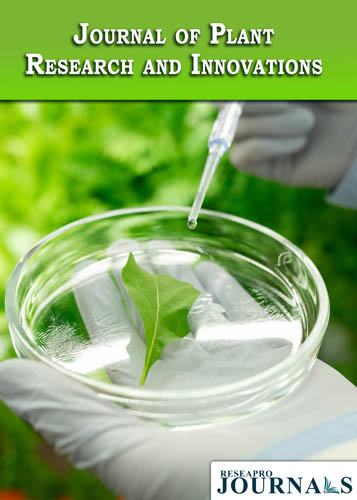
Journal of Plant Research and Innovations
OPEN ACCESS

OPEN ACCESS

Evaluation of 50 lines of okra including thirteen parents, thirty-six hybrids, and one standard check (Punjab-8) in a Randomized Block Design with three replications to analyse heterotic potential and combing ability. Crosses L3 x T2 (8.28), L8 x T3 (8.46) and L9 x T3 (7.68) exhibited significant positive heterosis for yield plant-1. Same crosses L3 x T2 (-8.33, -15.94) and L9 x T3 (-4.17, -18.12) exhibited negatively significant heterosis for traits viz. days to 50% flowering and days to first picking respectively over standard check that revealed earliness traits. High heterotic potential obtained in hybrid estimates genetic divergence among the parental lines and can be commercially exploit for heterosis in okra. However, the parents L3, L2 and L9 were all excellent general combiners. Parents exhibited significant and highly negative GCA effect for days to 50% flowering and days to first picking respectively viz. L3 (-2.69, -2.39) and T1 (-0.43, -0.92). Crosses L5 x T4 (-4.19, -8.39) exhibited highest negatively significant SCA effect for days to 50% flowering and days to first picking respectively and L5 x T3 (102.79) exhibited highest positively significant SCA effect for yield plant-1. Variance to (GCA) general combining ability σ2GCA is lower than the variance to (SCA) specific combining ability σ2SCA with σ2GCA: σ2SCA ratio (< 1) less than unity indicating non-additive gene action for all the © 2024 The Author(s). Published by Reseapro Journals. This is an Open Access article distributed under the terms of the Creative Commons Attribution License (http://creativecommons.org/licenses/by/4.0/), which permits unrestricted use, distribution, and reproduction in any medium, provided the original work is properly cited.traits.